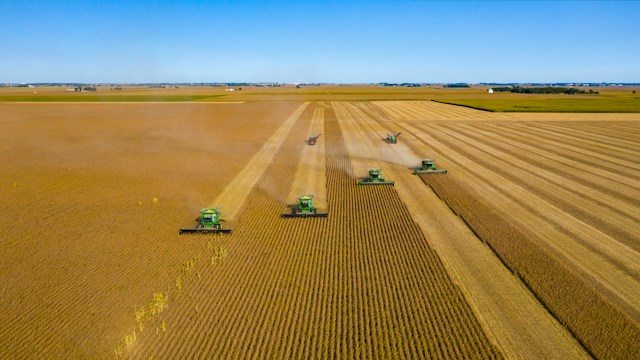
-
Cebu offers much opportunities for US agricultural exporters, according to the United States Department of Agriculture
-
The report underscores the significance of Cebu Port as a key distribution hub, citing a 7% growth in international and domestic shipments from 2021 to 2022 totaling 66.3 million metric tons
-
Opportunities in feed manufacturing, food service, and retail sectors, especially in Central Visayas, offer promising avenues for US exports, including top products like soybean meal and various animal feed ingredients
Cebu offers much opportunities for US agricultural exporters, a recent report from the United States Department of Agriculture (USDA) said.
Cebu emerged as a focal point for burgeoning prospects in the feed and food manufacturing, food service, and food retail sectors, particularly in the Central Visayas region, according to the USDA-Foreign Agricultural Service (FAS) report.
The report pointed out that Cebu’s appeal lies in its potential for fostering the export of diverse US products, including meat, potatoes, dairy items, and crucial animal feed ingredients.
USDA-FAS also underscored Cebu Port’s position as a key distribution hub, registering 7% growth in both international and domestic shipments, culminating in 66.3 million metric tons from 2021 to 2022.
Central Visayas—renowned as one of the Philippines’ top hog-producing regions—will be of interest to US animal feed producers, notably in soybean meal – a top US agricultural export to the Philippines in 2022.
The report also pointed to several other US export products such as meat and bone meal, bakery meal, millet, soya protein, oats, whey powder, and distiller’s dried grains with soluble, all geared towards meeting the diverse demands of the market.
The USDA-FAS also said a growing trend where Manila-based food and beverage manufacturers establish their foothold in Cebu, positioning factories and distribution centers to cater to the Visayas and Mindanao regions.
The synergy extends to meat processing plants sourcing mechanically deboned chicken meat for various culinary applications, while milling companies procure wheat, and dairy manufacturers import white cheddar cheese, whey powder, and skim milk powder.
The USDA-FAS report also underscored the promising opportunities arising from the luxury segment, including five-star hotels, resorts, high-end restaurants, and international restaurant chains. These establishments increasingly feature US ingredients, such as premium beef cuts, pork cuts, and duck, on their menus, opening new avenues for collaboration and trade.
As for the dining landscape in Cebu, the report observed that while many restaurants opt for local produce from wet markets and retail stores, a strategic shift is occurring among certain restaurant and hotel chains. Some are now directly sourcing food and beverages from importers, aiming to streamline costs and enhance efficiency. Quick-service restaurants are noted for substantial purchases of chicken leg quarters, chicken drumsticks, and frozen potato fries.
In addition, the report noted that while grocery stores predominantly offer local products, there is a consistent presence of imported items, including meat, fruits, canned goods, snacks, sauces, condiments, cheeses, and wines. Warehouse or membership clubs, recognizing the growing demand for American brands, are planning expansions in the Visayas region.
Also worth considering is the youth-driven market in Cebu, where 40% of the population is 14 years old and below. The report emphasized that grocery stores strategically align their offerings, with powdered milk, cheeses, ice cream, snacks, and frozen fries emerging as top-selling products, even as it pointed to the sustained popularity of various US products in retail stores, including beef, pork, chicken, turkey, apples, oranges, lemons, strawberries, condiments, soups, non-alcoholic beverages, and wines.
READ: 1st US presidential trade mission to PH set on March 11-12





USDA is out of it’s mind if they think we Americans would benefit from growing crops in Cebu and exporting them to the United States! You got to be out of your mind. I’ve been here four months, the Philippine people charge 250 pesos per kilo to its own people for mangoes. I have been here for four months and have two months left on a six month vacation year and everything I purchase at the local supermarket that is from the United States. It’s 50% more if I purchase something via Amazon like Hellmann’s mayonnaise because this country does not allow good quality product only the garbage they produce in Manila. I end up paying 75% more than if I was buying it back home in Florida. The United States has given the Philippines $22 billion for children’s education and healthcare over the last 20 years, and I as a foreign tourist visiting this country have spent over 15,000 USD in only 4 months. I look at this visit to the Philippines as a bad investment decision.
Comments are closed.